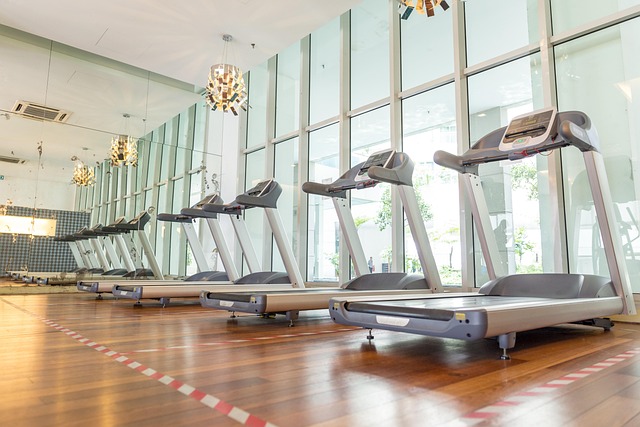Exercise is an essential part of maintaining a healthy lifestyle. Whether you’re a professional athlete, a fitness enthusiast, or someone just starting their fitness journey, the way you prepare your body for physical activity and recover afterward plays a critical role in your overall performance and long-term health. This is where warm-up and cool-down exercises come into play. These two components are often overlooked by many, but they are as important as the workout itself. In this article, we will explore why warm-ups and cool-downs are crucial and how they contribute to better performance, injury prevention, and faster recovery.
Why Warm-Ups Matter
A proper warm-up is like priming an engine before a long drive. It prepares your body for the physical demands of exercise by gradually increasing your heart rate, blood flow, and muscle temperature. Here’s why warm-ups are so important:
1. Preventing Injuries
One of the primary purposes of warming up is to reduce the risk of injuries. When you warm up, your muscles and joints become more flexible and pliable, which minimizes the chances of strains, sprains, and tears. Cold muscles are stiff and less elastic, making them more prone to injury during sudden movements or high-intensity activities. A good warm-up ensures that your body is ready to handle the stress of exercise.
2. Improving Performance
Warm-ups enhance your physical and mental readiness for exercise. By gradually increasing your heart rate and circulation, they deliver more oxygen and nutrients to your muscles, improving their efficiency. Additionally, warm-ups help activate your nervous system, sharpening your reflexes and coordination. This means you’ll be able to perform at your best, whether you’re lifting weights, running, or playing a sport.
3. Mental Preparation
Exercise isn’t just about physical effort; it also requires focus and concentration. A warm-up gives you time to mentally prepare for your workout, helping you transition from a relaxed state to one of heightened awareness. This mental shift can improve your motivation and commitment to the session.
Examples of Effective Warm-Ups
Dynamic stretches and light cardio are excellent ways to warm up. For example:
- Jogging in place or brisk walking for 5–10 minutes.
- Arm circles, leg swings, and torso twists to loosen up your joints.
- High knees, butt kicks, or jumping jacks to elevate your heart rate.
- Sport-specific drills if you’re preparing for a particular activity, such as dribbling a ball for soccer or practicing footwork for tennis.
The Role of Cool-Down Exercises
While warm-ups prepare your body for action, cool-downs help it transition back to a resting state. Skipping this step can leave your body feeling stiff, sore, and fatigued, while incorporating cool-down exercises promotes recovery and reduces discomfort.
1. Reducing Muscle Soreness
After intense physical activity, lactic acid and other metabolic byproducts can build up in your muscles, leading to stiffness and soreness (often referred to as delayed onset muscle soreness, or DOMS). A proper cool-down helps flush out these waste products, reducing post-workout soreness and speeding up recovery.
2. Lowering Heart Rate Gradually
During exercise, your heart rate increases to pump more blood and oxygen to your muscles. Stopping suddenly without cooling down can cause dizziness, nausea, or even fainting due to a rapid drop in blood pressure. A cool-down allows your heart rate and breathing to return to normal levels gradually, preventing these issues.
3. Enhancing Flexibility
Cool-downs often include static stretching, which improves flexibility over time. Stretching after a workout, when your muscles are still warm, is particularly effective because they are more receptive to lengthening. Increased flexibility not only enhances your range of motion but also reduces the risk of future injuries.
Examples of Effective Cool-Downs
Static stretches and gentle movements are ideal for cooling down. Some examples include:
- Holding stretches for major muscle groups, such as hamstrings, quadriceps, calves, shoulders, and back.
- Practicing yoga poses like Child’s Pose or Downward Dog to relax both your body and mind.
- Walking slowly or performing low-intensity exercises like cycling on a stationary bike.
The Connection Between Warm-Ups, Cool-Downs, and Long-Term Fitness
Both warm-ups and cool-downs contribute to sustaining a consistent fitness routine. By reducing the risk of injuries and muscle soreness, they make it easier for you to stick to your workouts without prolonged recovery periods. Over time, this consistency leads to better results and improved overall health.
Moreover, these practices foster mindfulness and discipline. Taking the time to properly warm up and cool down shows respect for your body and its limits. It encourages you to listen to your body and adjust your workouts accordingly, which is key to avoiding burnout or overtraining.
Common Mistakes to Avoid
Despite their importance, many people make mistakes when it comes to warming up and cooling down. Here are some pitfalls to watch out for:
- Skipping Them Altogether: Many individuals rush into their workouts or end abruptly without giving their bodies time to adjust. This habit increases the risk of injuries and delays recovery.
- Overdoing It: While warming up and cooling down are beneficial, excessive intensity or duration can tire you out before your main workout or hinder recovery.
- Using Static Stretches as Warm-Ups: Static stretches should be reserved for cool-downs, as they don’t effectively prepare your muscles for dynamic movements.
Final Thoughts
Incorporating warm-ups and cool-downs into your fitness routine doesn’t require much extra time, but the benefits are immense. They serve as bookends to your workout, ensuring that your body is prepared for action and properly cared for afterward. By dedicating just 10–15 minutes to each, you can maximize your performance, minimize the risk of injuries, and enjoy a smoother recovery process.
Remember, fitness is not just about pushing yourself harder; it’s about working smarter. So the next time you lace up your sneakers or head to the gym, take a moment to appreciate the value of warming up and cooling down. Your body will thank you for it in the long run.

Leave a Reply